It’s not always easy to identify one closely related species or breed over another, especially with birds.
Two birds that are easily mixed up are the Eurasian collared dove and the mourning dove.
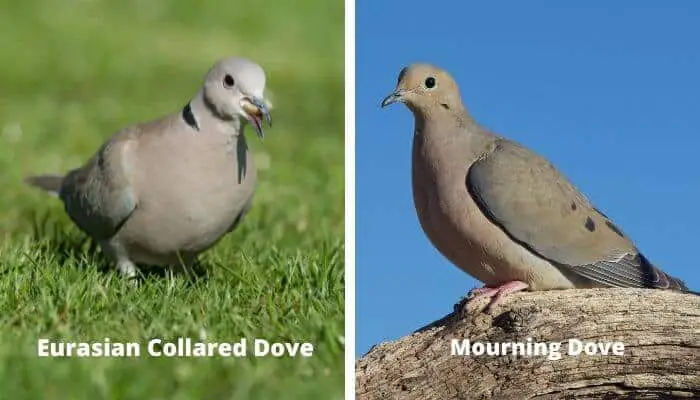
The Eurasian collared dove is an invasive species in the U.S.A so can be hunted all year round as long as you have a hunting license.
The mourning dove can only be hunted in hunting season which begins on September 1st every year (end dates vary by state), so knowing the difference between the two is important if you plan to do any dove hunting.
Origins and Distribution
The Eurasian Collared-Dove
The Eurasian collared dove was originally introduced to the Bahamas in the 1970s. Due to an accidental release, some birds made their way to Florida in the 1980s.
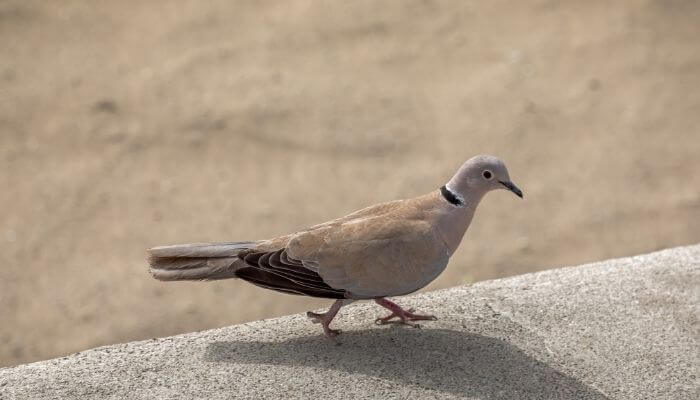
The invasion continued in the ensuing years and the bird spread rapidly, colonizing the whole continent. It is now one of the most common birds in North America.
Note the use of the word invasion – this is a key point. Eurasian collared doves are not native North American birds.
The Mourning Dove
The mourning dove is also one of the most common and familiar birds all across the American continent, being found as far north as southern Canada and as south as central Mexico.
The Mourning dove gets its name from its distinctive call.
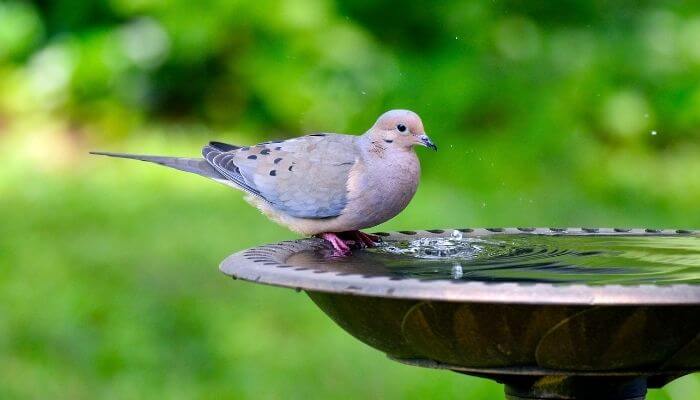
Unlike the Eurasian collared dove, however, the mourning dove is a native bird to North America.
Ways to Tell the Difference Between a Mourning Dove and Eurasian Collared Dove
Appearance and distinguishing characteristics
One key difference is that there are five sub-species of mourning dove while the Eurasian collared dove stands alone. It is very difficult to identify the subtle differences between the five sub-species.
Of the two, the slightly larger bird is the Eurasian collared dove reaching 14 inches long compared to 12 for the mourning dove.
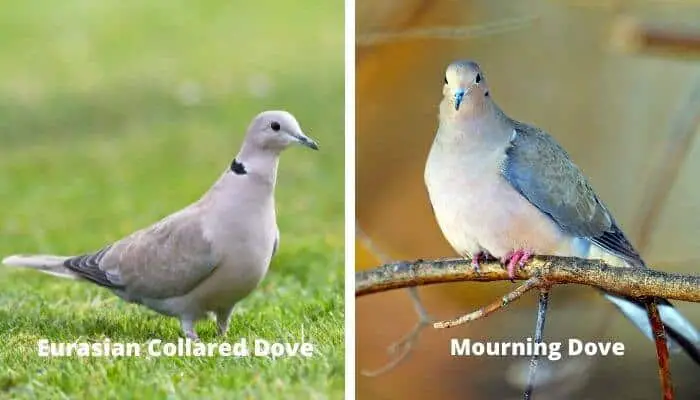
It is in the coloring that the main difference is evident.
The Eurasian collared dove has an almost pink tinge to its chalky light brown to grey buff body plumage.
The mourning dove is more earthy brown in color and also has distinctive black spots on its wings.
Another way to identify the different birds is by their tails. The Eurasian collared dove has a squared-off tail whereas the tail of the mourning dove is pointed.
The last physical appearance difference worth noting is that an adult mourning dove has a black cheek smudge whereas the Eurasian collared dove has a narrow, black-bordered white crescent (collar) on the back of its neck that gives the bird its name.
You will often find flocks of mourning doves perching on things like telephone wires.
Slender and graceful creatures, mourning doves are particularly known for their impressive flight speed, able to move extremely fast and bullet straight. Eurasian collared doves generally do not roost out in the open in numbers.
Calls And Sounds
The male Eurasian collared dove has a very distinctive call that follows a ‘koo KOO kook’ pattern which they use to both attract mates and defend their territories.
This song can be repeated anywhere between 3 and 12 times depending on the severity of a given situation! Females have a softer version of the song.
When a Eurasian collared dove is alarmed or excited, it will produce a ‘hwaah’ sound, and in terms of other noises, males also clap their wings together when displaying during a flight.
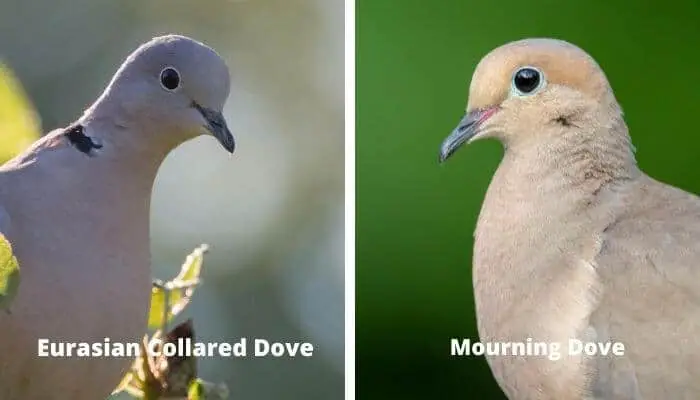
Mourning doves have perch coo that is mostly produced by males who are looking for a mate.
It sounds like a soft ‘coo coo’ that can be followed by three or four louder ‘coos’ if they become insistent!
Paired males will give a three-part call when building a nest with their mate that resembles a ‘coo OO oo’, and a female mourning dove will sometimes produce an ‘ohr ohr’ noise when sitting on the built nest.
Another noise difference between the Eurasian collared dove and the mourning dove is that when taking off and landing, a mourning dove will make a loud whistling sound that has the effect of startling predators and warning their fellow flock mates.
Why Recognising the Two Birds is Important
It was mentioned earlier that the Eurasian collared dove is not a native bird to North America. It is in fact, an invasive species.
This status is significant and is why it is important to be able to tell the difference between the mourning dove and the Eurasian collared dove.
The birds’ status drives the hunting laws.
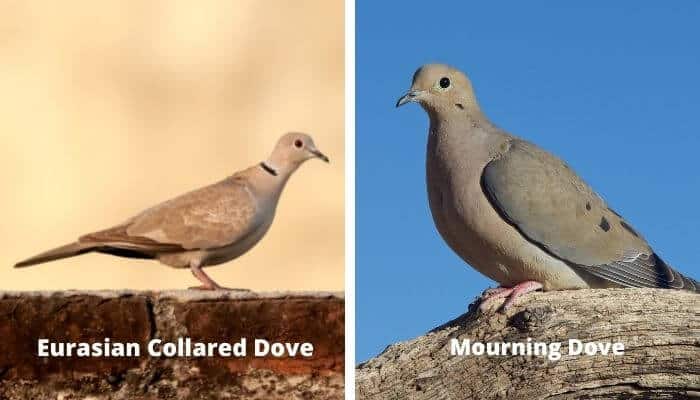
As an invasive species, in the USA, it is legal to hunt the Eurasian collared dove all year round as long as you have a hunting license. The mourning dove can only be hunted in hunting season which begins on September 1st every year (end dates vary by state).
In the UK, hunting licenses aren’t issued but hunters must have a shotgun registration and abide by the regulations on hunting set out in the Wildlife and Countryside Act 1981.
It should be noted that mourning doves are very uncommon in the UK and the attitude to pigeons and doves is a little different.
Although there is little difference, doves are seen as lovely birds to be preserved while pigeons are considered pests. Hunters are always more likely to kill a pigeon rather than a dove.
Pigeon and dove hunting is also not really a sport in the UK.
Pigeons are shot either as meat or in a culling.
Hopefully, these insights have helped you to understand the importance and relevance of the differences between the Eurasian collared dove and the mourning dove. They are both great breeds with their own unique and special qualities.
